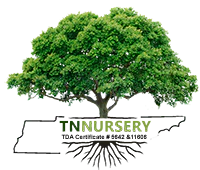Filters
In some areas, a garden can seem impossible due to the lovely but destructive deer population. A deer, if hungry enough, will eat almost anything. There are, however, some that it will usually ignore in favor of tastier treats. So, while there are no guarantees, here are five beautiful, deer-resistant plants.
Deer Resistant Plants
If you live in the south, you are familiar with hydrangeas. But did you know that they typically won't touch them? The showy blooms of the hydrangea shrub prefer partial shade and plenty of water.
Ferns
Several types of ferns are a real turn-off for deer! Try a Haysented fern, or for a burst of color, a Christmas Fern. These shade-loving ones require plenty of water. They come in multiple shades of green and in a variety of shapes and textures.
Daffodils
Daffodils are deer-resistant flowers that love the sun! The bulbs during the fall and watch them bloom in early spring. The cheerful blooms will return year after year. Privet Hedges are a great investment. They are hardy through zone 7 and, if left alone, can grow up to twelve feet high. Their glossy leaves and tiny, white springtime flowers make this an attractive hedge. Privet Hedges prefer full sun or partial shade.
Magnolia Trees
The fragrant, white flowers of the magnolia tree contrast with the glossy, dark green leaves. This tree is a showstopper. It usually leaves this tree alone, but the Magnolia is not a fast-growing tree. With a little patience, this tree can become the centerpiece of your yard.
Fulfill All Your Garden Needs With Garden Plants Nursery
These are just a few that may be considered deer-resistant. There are deer-resistant plants for all areas and types of gardens. With a little research, you can have that garden you have always dreamed of, even if you live in an area where they are common.
















































